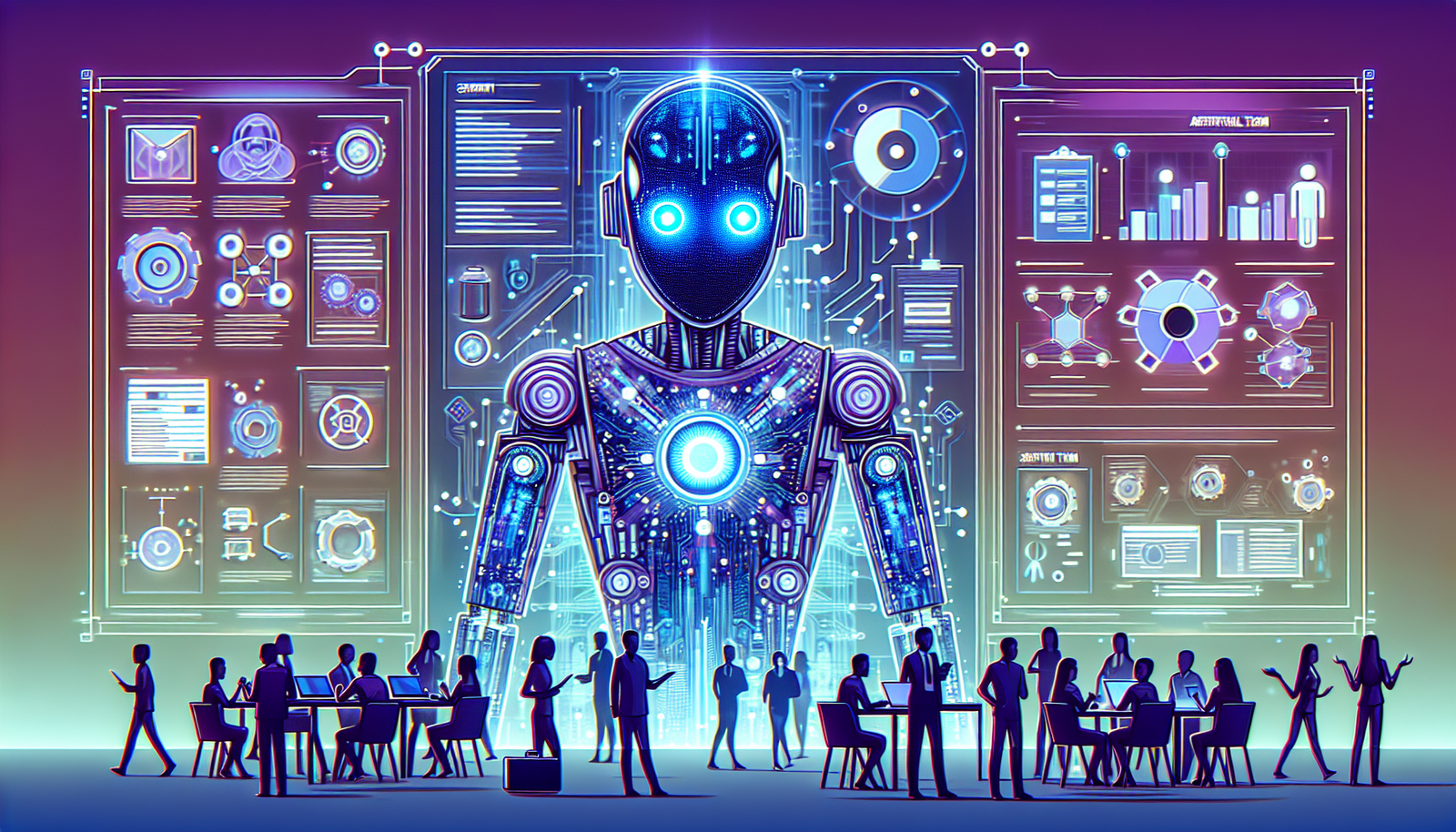CrewAI transforms artificial intelligence into a strategic ally. *Facilitating collaboration within Scrum teams* proves crucial for current productivity. Companies are seeking innovative solutions in the face of demanding challenges, ensuring perfect synergy between AI agents and humans. Optimizing processes has now become a priority. *With CrewAI, the automation of complex tasks* is achieved without compromising the quality of work. Each agent, acting as a team member, enhances collective efficiency and drives innovation.
CrewAI: A Collaborative System for Scrum Method Teams
CrewAI positions itself as a revolutionary artificial intelligence platform, facilitating collaboration within work teams. This innovative system allows the creation of AI agents capable of working together to automate complex processes that typically require significant human intervention. By using the Scrum framework, CrewAI enhances efficiency and synergy among team members.
Features of CrewAI
Proactive collaboration is CrewAI’s motto. The technology relies on specialized autonomous agents that seamlessly navigate all stages of collaborative work. These agents not only perform specific tasks but also communicate with each other to optimize problem-solving.
The Python-based architecture allows non-technical users to design agents without programming skills. With an intuitive interface, all team members can leverage the capabilities of artificial intelligence with just a few clicks. This democratizes access to the power of generative AI and makes innovation accessible to everyone.
Self-Training and Performance
Every agent developed by CrewAI is capable of self-training, ensuring that it remains at the cutting edge of performance. Skills improve as the context evolves, providing tailored responses to changing situations. This self-training allows for exceptional responsiveness to the needs of projects and clients.
Application in Scrum Method
Applied within the Scrum framework, CrewAI enables better management of iterations and sprints. AI agents play well-defined roles, whether as developers, testers, or project managers, without requiring constant supervision. This mechanism considerably reduces concerns related to task delegation, thereby increasing team productivity.
Impact on Innovation and Industry
The growing use of CrewAI in the professional sphere suggests a transformative potential for businesses. The automation of business processes, combined with AI-driven workflows, is revolutionizing the landscape of open-source collaboration. Companies consequently benefit from a more agile and flexible approach to contemporary challenges.
CrewAI becomes a strategic asset in a context where rapid innovation is crucial. By integrating AI agents into Scrum teams, organizations adopt a working method that fosters creativity and efficiency.
Future Perspectives of CrewAI
The future looks promising for CrewAI, with increasing investments allowing it to enhance its technical capabilities. The startup positions itself as a central player in the automation sector, with significant fundraising potential to continue innovating. Furthermore, the business model of the system could evolve, attracting more companies looking to modernize their internal processes.
Future projects aim to further strengthen the collective intelligence driven by AI agents. This ambition fits within a dynamic of accelerating digital transformations within companies, making automation both accessible and effective.
Conclusion on Potential Risks
Concerns associated with the adoption of AI, such as data security and ethics, remain prevalent. It is imperative that companies proactively address these issues. By integrating CrewAI into their practices, they must commit to adhering to legal and ethical standards regarding data processing.
Communities and businesses must collaborate to make the most of this technology while minimizing risks associated with its use. One of the priorities will be to find a balance between innovation and the protection of individuals affected by these transformations.
Help Section: Frequently Asked Questions about CrewAI
What is CrewAI and how does it work within Scrum teams?
CrewAI is a platform that allows for the creation of teams of artificial intelligence agents capable of collaborating within Scrum methodologies. It orchestrates multiple autonomous agents to accomplish complex tasks by facilitating communication and collaboration among them.
What are the main advantages of using CrewAI for Scrum teams?
CrewAI enhances productivity by automating processes, reducing the need for human intervention in repetitive tasks, and allowing for better time and resource management through optimal teamwork.
How can I train my AI agents with CrewAI?
The CrewAI platform offers an intuitive interface that allows users to train their artificial intelligence agents without needing programming skills. Users can easily adjust settings to optimize agent behavior according to the specific needs of their project.
Is CrewAI compatible with other Scrum project management tools?
Yes, CrewAI has been designed to integrate with various existing project management and collaboration tools, thus facilitating its adoption by teams already engaged on platforms like Jira, Trello, or Asana.
What types of tasks can be automated with CrewAI in a Scrum environment?
CrewAI can automate a variety of tasks such as ticket management, project status updates, data collection, and even report generation, allowing teams to focus on higher-value work.
Is data security guaranteed with CrewAI?
Yes, CrewAI is committed to ensuring data security by using advanced security protocols and complying with current regulations on data protection.
Can I customize the AI agents created with CrewAI to meet my specific needs?
Absolutely, CrewAI allows for the customization of agents according to the unique needs of your project, including role definition, task specification, and data selection.
What types of industries can benefit from CrewAI?
CrewAI can be beneficial in many industries, including technology, healthcare, finance, and education, where collaboration and automation processes can improve efficiency and innovation.






